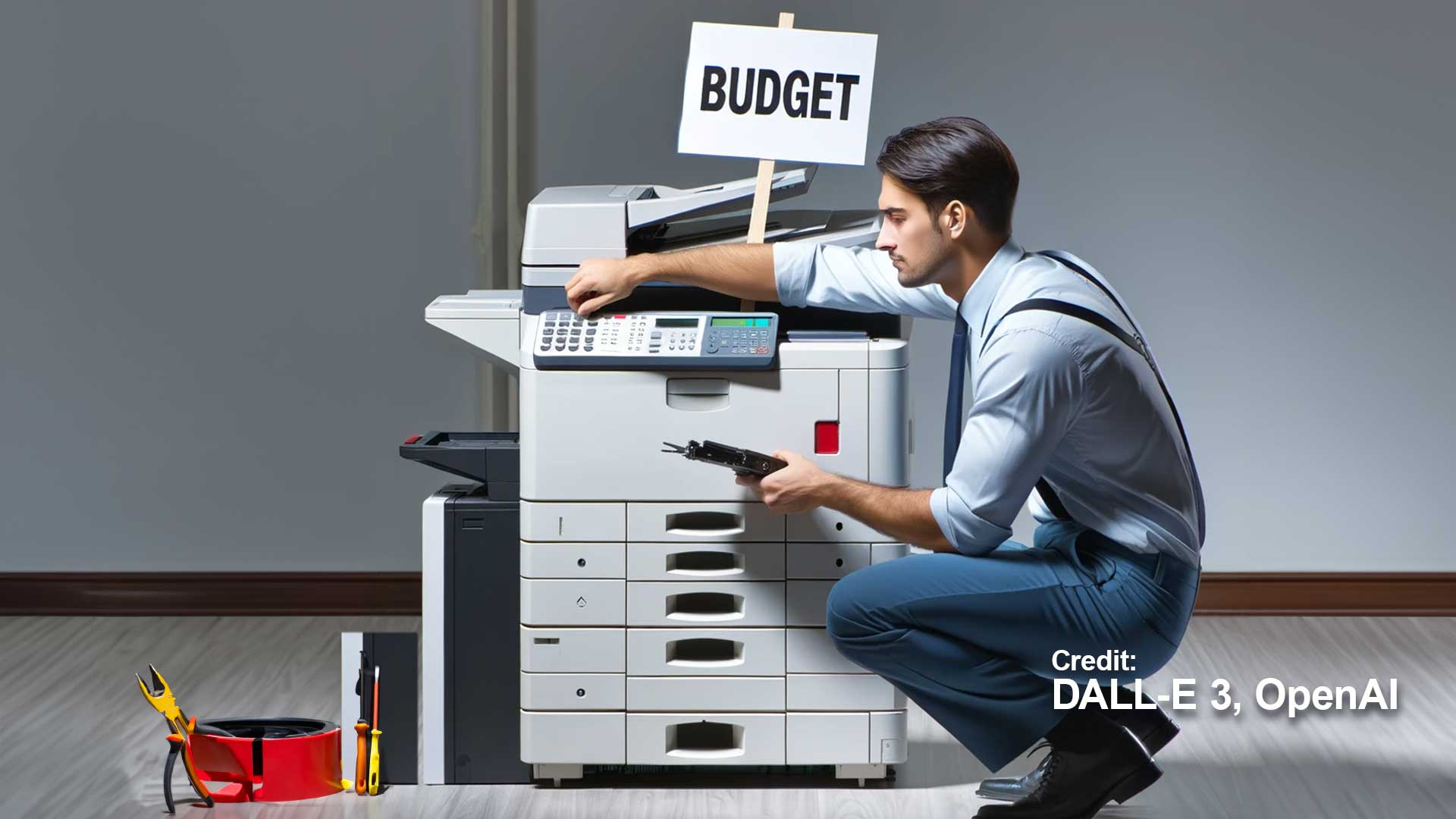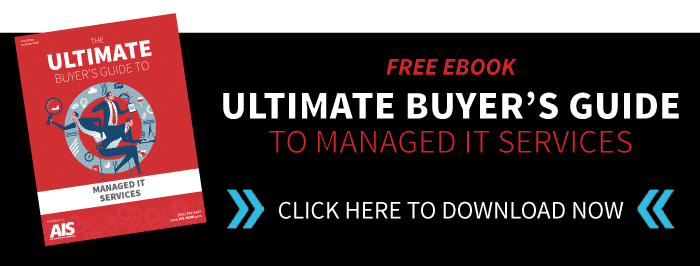Trimming Your Tech Budget: The Role of Regular Copier and Printer Care
February 21st, 2024 | 4 min. read

In a period where technology underpins every facet of business operations—from digital marketing to the seamless management of remote work, the allocation of an office technology budget emerges as a cornerstone of strategic planning.
Amidst substantial investments in software and hardware, office essentials like copiers and printers are often relegated to a footnote until they malfunction.
The irony, however, is that skimping on the maintenance of these workhorses can lead to a downpour of hidden costs.
This article examines the critical role of regular copier and printer care, illustrating how it safeguards equipment and serves as a savvy strategy for tech budget optimization.
The Hidden Costs of Neglecting Copier and Printer Maintenance
Neglect in maintenance schedules for office copiers and printers can rain a slew of unforeseen expenses and operational hitches. The direct costs are real—frequent breakdowns necessitate repairs or replacements, denting the budget.
But the slighter is the costs of the operational disruptions they cause. A broken printer can stall the production of critical financial reports, delay decision-making processes, or impede the timely execution of marketing campaigns.
Moreover, these disruptions can erode customer trust and satisfaction as service delivery timelines stretch beyond expectations.
The cascading effect of such neglect doesn't end here. The lifespan of poorly maintained equipment drastically reduces, necessitating premature capital investments in new devices.
This cycle of neglect, disruption, and unplanned expenditure can inflate a company's tech budget by an estimated 3% to 5% annually—a significant figure that could otherwise contribute to growth initiatives.
Essential Maintenance Tips for Copiers and Printers
Mitigating these risks requires a proactive maintenance stance. Here are some tips on how to keep your copiers and printers in prime condition:
Comprehensive Cleaning
Beyond dusting, internal mechanisms need attention. Accumulated dust and debris inside the machine can lead to paper jams and degraded print quality. Regular, detailed cleaning, as the manufacturer recommends, prevents these issues.
Proactive Consumable Management
Another helpful tip is to monitor ink and toner levels to avoid the poor print quality and potential damage that can occur when cartridges run dry. Also, be mindful of wear and tear on parts like rollers and fusers, replacing them as needed to maintain optimal performance.
Software and Firmware Updates
Keeping the device's software up to date is crucial for security and functionality. Manufacturers often release updates that enhance performance or add new features and patches for known vulnerabilities.
Scheduled Inspections and Servicing
Regular checks for signs of wear or potential issues can prevent minor problems from escalating. Setting a schedule for professional servicing ensures that your equipment is thoroughly inspected and maintained, optimizing its performance and longevity.
Adopting these practices can dramatically reduce the incidence of device failure, enhance operational efficiency, and contribute to significant savings in tech maintenance budgets.
The Role of Professional Maintenance Services
While internal teams can manage basic maintenance tasks, the expertise and efficiency of professional services offer unparalleled benefits.
These specialists can conduct a comprehensive assessment, identifying issues non-experts might overlook.
Also, their access to original manufacturer parts and in-depth knowledge of various models can ensure repairs and maintenance are performed to the highest standard.
The decision between in-house maintenance and outsourcing should consider the complexity of the equipment, the skill level of available staff, and the potential cost savings that professional services offer over the long term.
Implementing a Maintenance Schedule: Best Practices
A systematic approach to maintenance can transform it from a chore to a strategic advantage. Some of these critical steps include:
Developing a Customized Maintenance Calendar
Tailor your maintenance schedule to your equipment's specific needs and usage patterns, ensuring that each copier and printer receives attention when needed.
Educating Your Team
A well-informed staff can be the first line of defense against potential issues. Training on basic maintenance procedures and the importance of timely reporting of issues can prevent minor problems from becoming major ones.
Allocating a Dedicated Maintenance Budget
Anticipate maintenance needs and allocate funds accordingly. This proactive budgeting can prevent maintenance from being sidelined due to other financial pressures.
Maintaining a Detailed Log
A log of all maintenance activities, including dates, actions taken, and any parts replaced, can provide valuable insights into the health of your equipment and help predict future needs.
Your Next Best Steps: Saving Money Through Copier Maintenance
Now that you have a better idea about the importance of your office technology maintenance make sure to take these next steps into account:
Assessment and Inventory: Thoroughly evaluate your current copier and printer fleet. Identify each unit's age, condition, and maintenance history to prioritize needs.
Develop a Maintenance Plan: Based on the assessment, develop a detailed maintenance plan that includes regular cleaning schedules, inspection intervals, and consumable replacement timelines. Tailor this plan to each device's specific needs and usage patterns.
Allocate Resources: Ensure that there are clear allocations in your tech budget for maintenance activities. This includes funds for professional servicing, replacement parts, and training for staff on basic maintenance tasks.
Select Maintenance Partners: If opting for professional maintenance services, carefully select your service providers. Look for partners with expertise in your specific brands and models, and evaluate their service packages to find the best fit for your needs.
Implement a Tracking System: Use a digital tool or a simple spreadsheet to track maintenance activities, costs, and outcomes. This system should allow you to monitor the health of your equipment over time and make informed decisions about future investments.
Train Your Team: Educate your staff about the importance of maintenance and how they can contribute. This includes training on basic care, the correct use of equipment, and the importance of reporting issues promptly.
Review and Adjust: Regularly review the effectiveness of your maintenance plan. Use the data from your tracking system to adjust schedules, reallocate resources, and make improvements. This iterative process ensures your maintenance strategy evolves with your business needs.
Stay Informed: Technology and best practices evolve. Stay informed about new maintenance technologies, software updates, and efficiency tips through industry publications, forums, and professional networking.
A true southerner from Atlanta, Georgia, Marissa has always had a strong passion for writing and storytelling. She moved out west in 2018 where she became an expert on all things business technology-related as the Content Producer at AIS. Coupled with her knowledge of SEO best practices, she's been integral in catapulting AIS to the digital forefront of the industry. In her free time, she enjoys sipping wine and hanging out with her rescue-dog, WIllow. Basically, she loves wine and dogs, but not whiny dogs.

